The man above is Henry Lenthall (1819-1897), a photographer who operated a studio at 222 Regent Street, London, where the photo was printed. The studio had been established in 1856 by pioneering daguerreotypist William Edward Kilburn (1818-1891), when Kilburn moved there from his original (smaller) studio at 234 Regent Street. In 1862 Kilburn retired from photography, at which point Lenthall took over the 222 Regent Street address. Lettering on the front and back of the carte-de-visite describes Lenthall as Kilburn’s successor:


William Edward Kilburn’s distinguished sixteen-year career as a photographer had included serving as “Photographist to Her Majesty and His Royal Highness Prince Albert” from 1846 to 1852. (Kilburn made the first daguerreotype portraits of Queen Victoria and her family in 1847.) After Kilburn’s retirement, Henry Lenthall acquired the rights to reprint at least some of Kilburn’s photographs, such as this portrait of Florence Nightingale:
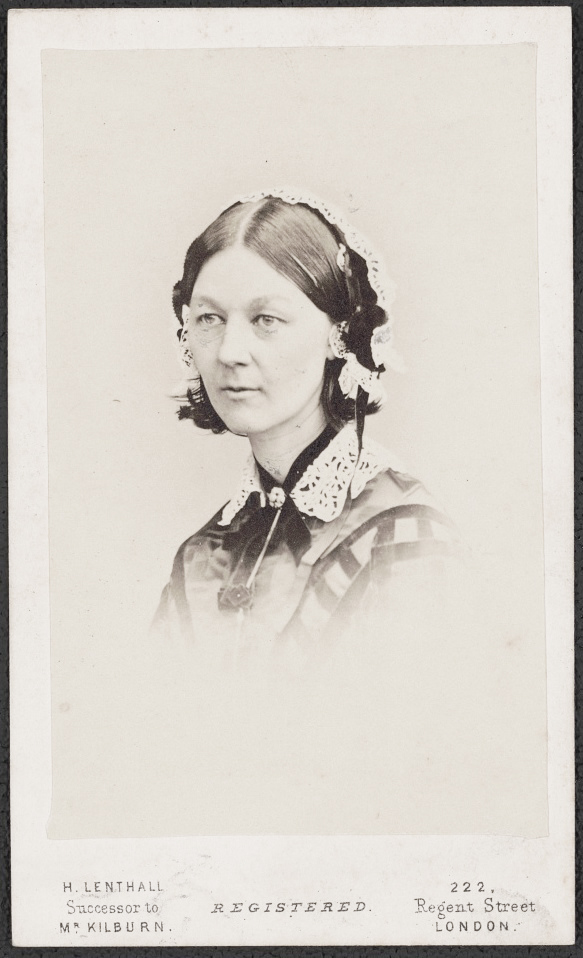
Lenthall may have given out cartes with his own portrait on them as a form of business card or calling card, a common practice in the 1860s and 1870s. If so, other examples may exist, but I have yet to find another. I bought this one from a photo dealer in Bath, England.
According to family trees on Ancestry.com, Lenthall and his wife, Ann Boggett Lenthall (1822-1916), had seven children: four girls and three boys. The first (a girl) was born in 1845 and the last (a boy) was born in 1861.
A list of all known portraits of Florence Nightingale mentions that Henry Lenthall’s stock was eventually acquired by the London Stereoscopic & Photographic Company.
Other sources (partial list):
Portrait Photographs in the Royal Collection: Prince Albert (1848), daguerreotype by William Edward Kilburn.
National Portrait Gallery: Florence Nightingale, albumen carte-de-visite, printed by Henry Lenthall, after William Edward Kilburn. Includes interesting context behind the original portrait.
National Portrait Gallery: William Edward Kilburn (1818-1891) and Henry Lenthall (1819-1897). Portraits in the collection.
David Wooters, “Daguerreotype Portraits by William E. Kilburn,” Image Vol. 33, Nos. 1-2 (Fall 1990): p. 21-29. The most detailed article I found about Kilburn. Lenthall is mentioned as his successor at the end of the article.

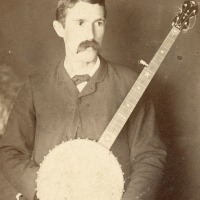
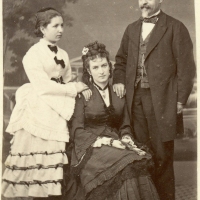
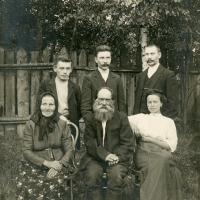
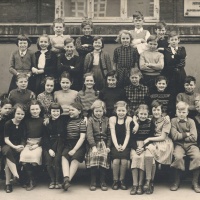
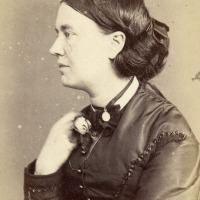
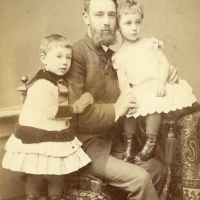
Interesting to learn about the person behind the camera.
LikeLiked by 2 people
I hope this was interesting to read, and not too dry. Thank you, Morgaine. 🙂
LikeLiked by 2 people
Not dry at all! I appreciated the links to more info as well. Early photos are always fascinating. 🙂
LikeLiked by 2 people
So interesting to see that Kilburn was called a “photographist.” There is really no predicting which form of a word will ultimately prevail.
LikeLiked by 3 people
Very true! The word “photographist” did persist as an alternative for a while, at least as late as the 1860s.
LikeLiked by 2 people
I have a passion for British culture and history. Your story about Lenthall and Kilburn has broadened my knowledge of Britain. What a brilliant career these two men pursued in 19th century!
LikeLiked by 2 people
I’m glad you liked the post, Isabelle! I knew nothing about the two men when I bought the photo, so it was all new to me as well. They were working at the dawn of photography. It must have been very exciting. 🙂
LikeLiked by 2 people
Always appreciate your research. Thanks! Sarah
LikeLiked by 2 people
Thank you, Sarah! Sometimes I don’t dig as much as I could, but this time I really made an effort. 😉
LikeLiked by 1 person
I’m going to have to spend some time with the links you provided; I’m intrigued. Too bad I have to get ready to go to work!
LikeLiked by 2 people
Hope you have a great day, Liz! Thanks for reading!
LikeLiked by 1 person
I love these pictures. This is the first picture I have seen of Florence Nightingale. Rather plain of appearance, but I am fascinated by her face. Strength, wisdom, compassion. It’s all there.
LikeLiked by 2 people
Apparently she was quite camera-shy: “Despite the demand for her image, she had a moral objection to celebrity and sat for her portrait rarely and with the greatest reluctance.” (https://www.npg.org.uk/whatson/display/20101/florence-nightingale1.php)
LikeLike
I also was drawn to Nightingale’s face. In the full-figure portraits, I was struck by how slight she looks.
LikeLiked by 1 person
Good observation, Liz.
LikeLiked by 1 person
Very interesting. Thank you.
LikeLiked by 1 person
What an amazing back story! So cool.
LikeLiked by 1 person
I thought this would be an easy post, but I kept finding additional references to Kilburn, sometimes contradictory, which had to be considered. Lenthall was more mysterious, but that also made him more intriguing. Thank you for reading!
LikeLiked by 2 people
What you say about Florence Nightingale’s aversion to celebrity may explain why I couldn’t remember seeing a photo of her. I’ve seen plenty of illustrations, of course, but a scan of the online images made clear how few there actually are. There are a lot of sources using the same images. She certainly looks more frail in the photo than she was in reality.
I was caught by the word “photographist,” too. I wonder if it wasn’t formed initially as an analog to “artist.” On the other hand, there are other words formed that way: ‘alchemist’ comes to mind. I haven’t done much reading about the history of photography, so I haven’t run across it, but it’s an interesting word.
LikeLiked by 2 people
Early photographers often advertised themselves as artists skilled at enhancing or coloring photographs, so your theory makes perfect sense. Many were undoubtedly trained artists, such as Edward J. Harding of Cork, Ireland, the only other “photographist” so far on the blog. (https://tokensofcompanionship.blog/2018/06/04/lydia-clibborn-pike-in-cork-ireland/) The word seems to have faded from use by the 1870s. Perhaps by then photography had gained enough stature that it could stand on its own, both artistically and linguistically.
LikeLiked by 1 person
He is a handsome gent. And Florence has a strength of gentleness about her. I always learn wonderful things from what you share. Thank you greatly for that! Can you imagine being so early to photography and having the opportunity to photograph Queen Victoria and her family! Pioneers in a new adventure! It boggles me. 😊
LikeLiked by 2 people
I particularly liked the colored daguerreotype of Prince Albert. It reminded me of the biography I read of Queen Victoria and how completely besotted she was with him. I can see why!
LikeLiked by 3 people
It’s a very fine example of the art of hand-coloring. Uncolored daguerreotypes can be incredibly beautiful as well. Albert and Victoria were both enthusiastic about photography, both as subjects (sitters) and as collectors!
LikeLiked by 1 person
Everyone I mentioned in this post was young when photography took off in the late 1840s and 1850s. Years of birth:
William Kilburn: 1818
Queen Victoria: 1819
Prince Albert: 1819
Henry Lenthall: 1819 (or early 1820)
Florence Nightingale: 1820
I can’t help but wonder if their closeness in age might have given them a rapport and a feeling that they were peers in a shared adventure. Nightingale was uncomfortable with her own celebrity, yet she trusted Kilburn enough to sit in front of his camera.
Thanks so much for your continued interest and enthusiasm. 😊
LikeLiked by 2 people
Looks like an impressive list of clientele for this business. Money well spent, I’d say – the work is truly impressive.
Thanks for sharing all the additional links. 🙂
LikeLiked by 2 people
Thanks so much, Ruth. This ended up being one of my more challenging posts to put together, because of all the sources–some vague or contradictory–but it was definitely worth it. 🙂
LikeLiked by 1 person
How amazing to have a photo of Nightingale and also the photographer’s signature on the back of a photo of him. (I wonder if he took it with a timer – not sure what sort they had then, if any – or someone else photographing him?) He looks younger than the age he probably was then.
Interesting that the London Stereoscopic company acquired his stock. I recently bought a CDV that was printed by them – not sure if it was originally stereoscopic but I’ve just got the one image, so maybe a second printing of it for a client. I’ve been wondering about posting it to my blog (suitably coloured, of course) and contacting them about it as the company still exists. Don’t know who the photographer was, though.
LikeLiked by 2 people
Hi Val, I don’t own the CDV of Nightingale–it’s in the collection of the Library of Congress. I was going to use one from your National Portrait Gallery, but the NPG doesn’t allow any changes to its images (“No Derivatives”), while most LOC images are in the public domain. An original photo of Nightingale would be quite expensive.
I agree that the photo of Lenthall was probably taken at least 10 years earlier than it was printed. He looks to me to be in his 30s, which would put the date in the mid-1850s, while my CDV was probably printed in the late 1860s. I found two other images of him in a family tree on Ancestry; one is a photograph and the other looks like a painting. I hoped to borrow one for this post, but the account seems to be inactive and I didn’t want to publish a family photo without permission.
Your Stereoscopic CDV sounds interesting. Do share it if you have time!
LikeLiked by 1 person
By ‘have a photo’ I meant in your post. I realised you didn’t have the original. 🙂 But you do have the Lenthall one.
I’m always wary of repostings of photos from Ancestry and wonder if permission has been sought first… I’m just trying to pluck up courage (aka ‘get out the virtual wallet’!) to join Ancestry properly. I’ve had a guest account for years but there’s very little can be done with that and I’ve so much (photo related) that I need to research. \
Have you tried doing a Creative Commons search for images for your blog? Providing you check the licence is up to date (and take a screenshot of it with the photo, as sometimes people change or remove the licence later) they can be very useful. If you Google ‘Creative Commons Search’ you’ll find it.
LikeLiked by 2 people
I didn’t know about the Creative Commons Search. Thanks for the tip!
I resisted joining Ancestry for years, but now I use it all the time. I recently also subscribed to Newspapers.com. It seems to work well enough, but I’m not sure yet if it’s worth the cost. In my experience, the best sources of information are usually family trees (if they exist). If you have a lot of research to do, the regular Ancestry subscription should be a big help.
LikeLiked by 1 person
It’s amazing how photography first began and the fascination of actually capturing a portrait – to where we are now with touch screen technology etc.
Interesting to find out about Henry and nice to see a photo of Florence Nightingale too. 🙂
LikeLiked by 1 person
Yes, you could say that our digital world is a step on a very long continuum. Photography was revolutionary in its day, but our modern digital images aren’t really better than what was being made in the 19th century. It’s just much easier today (and in color). Glad you enjoyed Henry and Florence! 🙂
LikeLiked by 2 people
Yes, I appreciate being able to take good quality photos with a small device. 🙂
I went to Scotland on a school trip once, armed with an old black and white Box Camera!! 😀
LikeLiked by 2 people
Did your old box camera take 620 film?
LikeLiked by 1 person
How come no one does cartes-de-visites any more?
LikeLiked by 1 person
I’ve wondered that, too! The closest modern equivalent would probably be school photos.
LikeLiked by 1 person
Great post, so interesting. I was stunned by how young Prince Albert looks-alittle like the elder current young prince. In the “Victoria series on PBS, theres an episode that deals with photographs of the family in their domestic moments, and how easily they could be proliferated, and eventually, how helpful they could be as public relations tools, for the royals.
I imagine this new intrusion into the private space seemed like a double-edged sword to them, much like social media does to us today.
BenjaminDisraeli was a major figure, too. Twice prime minister.
LikeLiked by 2 people
You mentioned private space, which got me thinking that photography really didn’t enter the private sphere until near the end of the 19th century, when cameras became much more portable. The royals were photographed in public from time to time, when they made official appearances, and they couldn’t very well prevent a photographer from printing an unflattering image. I’ve never seen or heard of one from the Victorian era, though.
LikeLiked by 2 people
Thanks for putting the focus on a photographer I’d never heard of, but who occupied a historically important address, and who produced some great work of his own.
LikeLiked by 1 person
You’re absolutely right that he was an accomplished photographer in his own right. I’d love to know more about his relationship with Kilburn. Was Kilburn his mentor, or did Lenthall simply make the best offer for Kilburn’s stock? Thanks for commenting, Greg!
LikeLike
how cool to see an actual photo of Florence Nightingale!
LikeLiked by 1 person
It’s a very nice portrait of her. Because she was camera-shy, not many images of her exist. Thank goodness she agreed to sit for Kilburn! I wonder who talked her into it.
LikeLike